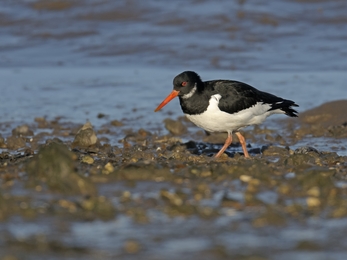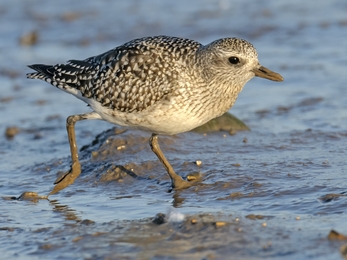Winter can often feel an empty time for the ravenous wildlife watcher. The months are cold, our landscapes look weary, and the once evident lives of wildlife have seemingly disappeared from view. It’s quite hard to imagine why anyone would favour wildlife watching during this time, but to be honest, whilst I enjoy looking at nature throughout the year, no time gives me more enjoyment than now in midwinter.
In many places across the county it can feel as if we’re wandering the countryside alone, but at select coastal and wetland sites, our land could not be any fuller of life and none more so than the ever popular birdwatching site known as ‘Severnside’. Although it has no formal designation, most locals demarcate this ten-kilometre strip of coastal bird wonder as running from the Old Severn Bridge south to the southern end of Chittening Warth. Containing a diverse mix of coastal habitats including mud flat, salt marsh and freshwater wetland, Severnside is a prime location to watch a fantastic number of wintering wildfowl like ducks, geese and swans, and waders -the ones with funny legs and beaks!
Everything starts in autumn. Birds returning from their breeding grounds in the freezing north, including Arctic Russia and Greenland, make their way south to the warmer and nutrient-rich waters of UK shores and wetlands. With each cubic metre of estuary mud containing enough worms and shellfish to equal the number of calories in sixteen Mars bars, that’s a lot of winter energy not to be missed, and so birds congregate around sites offering this buffet bonanza.
The numbers visiting the UK and joining our local birds are huge; half a million lapwings from across northern Europe, half a million dunlin from Scandinavia, 300,000 knot from northern Canada, 300,000 oystercatchers from Iceland and Norway, 60,000 bar-tailed godwits from north west Russia, 50,000 Icelandic redshanks, and 40,000 grey plovers from the Arctic. No wonder we see so much bickering and jostling for space on mudflats!
Back on Severnside, we experience just a fraction of this countrywide inundation but time your visit right and your views can be close and the numbers spectacular – especially when a merlin or peregrine makes an appearance. And if you do manage to linger until the very end of the day, you can be rewarded with views of one very special winter visitor, the short-eared owl, a regular here in the later winter months.
Matt Collis runs a series wildlife walks across Avon each month exploring the best of the region’s wildlife – including those on Avon Wildlife Trust nature reserves. His next walk takes place on 10th January on Severnside. Find out more and book on Matt’s website here http://mattcollisnature.co.uk/guided-walks/
Photo credits: Redshanks - Harry Hogg; Plover & oystercatcher Chris Gomersall/2020Vision



